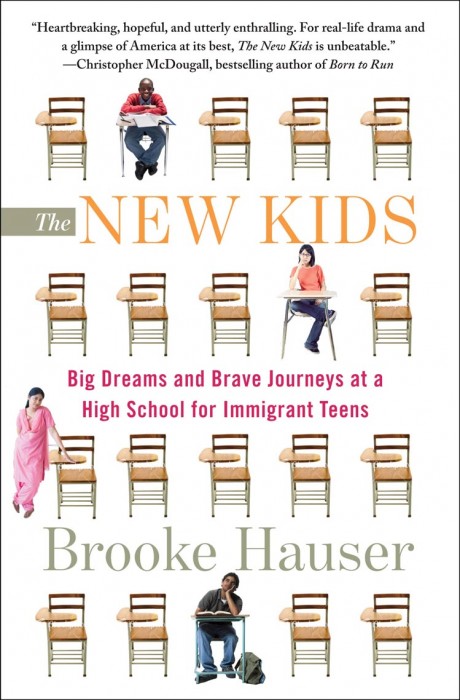
In “The New Kids: Big Dreams and Brave Journeys at a High School for Immigrant Teens,” author Brooke Hauser reveals the long journeys the students endured to reach Brooklyn, New York. And then once enrolled in Brooklyn International High School, a public school in Prospect Heights specifically geared for newly arrived teenagers, they faced a new struggle: finding to find their place in an American high school and shaping their new lives.
Hauser has clearly overcome the main obstacle education reporters face: obtaining access to the school and to the students. Her writing reveals the level of intimacy she achieved with the students, who invited her to their homes and shared the most personal moments.
At the end of her book, in a “Conversation with Brooke Hauser,” the author talked about the process of writing “The New Kids.” When asked how she chose the main characters for the book, Hauser said: “In September, I asked several twelfth-grade teachers this question: ‘When you go home at night, who are the students who you can’t stop thinking about?’” This is how the author came across Jessica, who arrived to America from China hoping to live with her father and his new family. Within a week, she was kicked out of her father’s apartment.
Another subject, Yasmeen, struggled to balance her home life as a Muslim girl, with her dreams of going to college. Hauser got to know many other students by reading their personal essays for college applications: the heartbreaking story of Ngawang, who spent a day in a suitcase along his escape route from Tibet to the U.S.; or the story of Mohamed from Sierra Leone, who wrote about his days mining diamonds with his father. Chit Su, the very first student that the reader meets, was chosen at random, as a newly arrived freshman. She was the only student in the school who spoke Burmese, and she spoke close to no English.
The International High School at Prospect Heights in Brooklyn belongs to the Network of International Schools in New York City. In order to be admitted to an International School, prospective students have to be in the U.S. for four years or less, and needed to fail the English language assessment test. The schools of the network have specialized curricula, school aides and other resources in order to facilitate the transition into America. Hauser makes the point that new immigrant students are better off attending these highly popular schools.
The author follows the students from the first day of classes, through the college applications and to the prom night. Her writing reveals intimate details of students’ day-to-day life, such as popping a zit on the prom night, or not having lunch at school for a couple of weeks, because a student did not know where the dining room was. The students struggle, trying to figure out what “being American” is, at the same time carrying the baggage of their past lives, wars and suffering.



